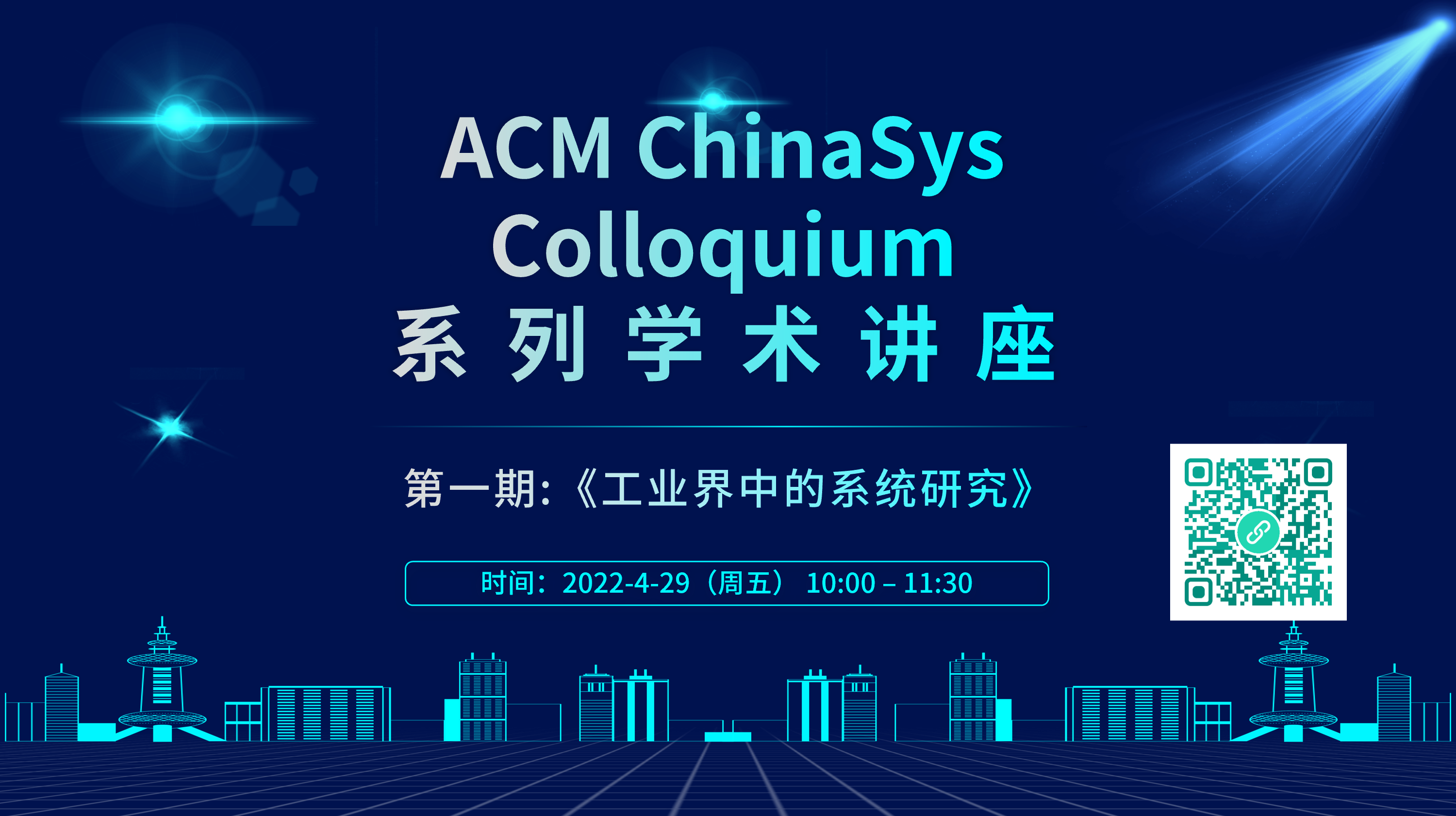Bojie Li
2022-12-10
Firstly, it is the scale of business. Due to geographical and cultural reasons, most domestic companies encounter some difficulties in going global, mainly in the domestic market, which is much smaller than the European and American markets. The same is true for public clouds, where the revenue and market value of AWS, Azure, and Google Cloud in the European and American markets are higher than those of Alibaba, Tencent, and Huawei Cloud in China. Since the development cost can basically be shared, the average salary of developers in American companies is higher than that in China, which can hire relatively more excellent talents; it can also generate more profits to support relatively long-term research, such as OpenAI, Deepmind, and Microsoft Research. Breakthrough innovations like ChatGPT are hard to come from product departments with intense development rhythms, they usually come from research departments without much short-term commercial monetization pressure.
2022-09-03
Text content to be supplemented, let’s put out a few photos first~
2022-07-27
Computer Network & Protocol Laboratory
Huawei’s Computer Network & Protocol Laboratory is a subsidiary of the Distributed and Parallel Software Laboratory of the Central Software Institute of the 2012 Laboratory, with locations in Beijing, Shanghai, Hangzhou, Shenzhen, and Tel Aviv, Israel.
Vision: Rooted in laying the foundation stone, innovation leads the future of distributed communication
Positioning: Huawei’s software engine in the field of computer network and protocol technology, covering theoretical breakthroughs, technological inventions, technological innovations, and quality delivery. Standing at the forefront of this technical field, we research and break through world-class technical problems in computing native networks and wide-area network deterministic communication, build an industry-leading full stack of distributed communication, and work with ICT, terminal, cloud, intelligent car and other main product teams to build differentiated communication competitiveness, gradually grow the industrial ecosystem, and help business success.
Team: A high-level innovation team composed of top industry-leading experts, genius youngsters, PhDs, and engineers mixed special forces, overseas legions. The technical research results are significant. Since 2018, 5 papers have been accepted by SIGCOMM, the top global network communication conference; and key technologies have been selected into Huawei’s top 10 inventions for three consecutive sessions.
2022-07-22
Let me update and preview the cities I have (or will have) visited right here!
(22 July 2022) Due to the pandemic, I haven’t moved anywhere for 4 months, missed a wedding on May Day, then missed registering our marriage on 5/20, and we haven’t seen each other for 4 months.
Now you need a trip record for the last 14 days no matter where you go; I can show my travel for the last 10 years! Following the same logic as the travel card, brief pass-throughs of a place don’t count, but transfers (flights/trains) usually do. Since 13 December 2022, the travel card has stepped down from the stage of history.
From 2012 to July 2022, I have been to a total of 42 cities, with 259 trips in total (going from city A to city B counts as one trip; if I then return to city A, that’s two), and in 2019 alone I even traveled 63 times. When I saw these stats, I was quite shocked. Although I did travel a lot for business in the last three years, and in 2019 I visited 12 cities in Japan, I still didn’t expect the number to be this high. Why so many business trips? The main team of my first project was in Hangzhou, so from June 2019 to May 2020 I spent most of my time there. For my current project I’m leading three teams, in Hangzhou, Shanghai, and Israel respectively—Beijing is the only place missing; and as an architect I often need to attend workshops as well. Maybe God just thinks I’m well-suited to long-distance life.
During my joint PhD program between USTC and Microsoft Research Asia (from my senior-year internship in 2013 to my PhD graduation in 2019), I had to shuttle frequently between Hefei and Beijing; among students that was already considered quite a lot. I didn’t expect to travel even more after starting work—according to Umetrip, in 2021 I traveled more than 97% of users. The remaining 3% travel even more than I do; they’re practically permanent flyers. One thing I kind of regret is that I was too stingy during my PhD, often reluctant to spend money on tickets and thus rarely met up with my girlfriend. Another small regret is that I was often too lazy to write trip summaries afterward. My memory is not very good, so after a long time I can only recall things from photos and chat logs.
As of November 2023, I have been to 71 cities and made 380 trips, 29 more cities than a year earlier, mainly thanks to our honeymoon trip to Xinjiang after the wedding, and my three-month stay in the US. Actually, “city” is a bit hard to define. In the US, it might make more sense to map it to counties. If I record every cross-county movement, then the number of “trips” in the US would increase a lot (and in fact, movements within the Bay Area and between Los Angeles and Irvine can hardly be called “travel” at all), and I probably wouldn’t even remember them all.

Of course, I don’t have the authority to get base-station connection data from telecom operators. The travel data here is collected from ticket records, business trip records, etc., and since some tickets were not booked by myself, some trips may be missing. For example, my trip back from MSRA to Hefei for my undergraduate graduation in June 2014 can no longer be traced. Based on the internship certificate stating 9 July 2013 to 30 May 2014, the date of my Beijing-to-Hefei trip has been confirmed.
If you spot any mistakes, feel free to contact me for corrections.
My Footprints
2025
| 开始日期 | 结束日期 | 城市 |
|---|---|---|
| 2025-12-15 | 2025-12-15 | 北京 |
| 2025-12-12 | 2025-12-14 | Palo Alto |
| 2025-12-06 | 2025-12-12 | San Francisco |
| 2025-12-05 | 2025-12-06 | Palo Alto |
| 2025-12-02 | 2025-12-05 | San Diego |
| 2025-11-30 | 2025-12-02 | Las Vegas |
| 2025-11-30 | 2025-11-30 | San Francisco |
| 2025-11-22 | 2025-11-30 | 北京 |
| 2025-11-16 | 2025-11-22 | 上海 |
| 2025-11-13 | 2025-11-16 | 香港 |
| 2025-10-25 | 2025-11-13 | 北京 |
| 2025-10-20 | 2025-10-25 | 上海 |
| 2025-10-09 | 2025-10-20 | 北京 |
| 2025-10-01 | 2025-10-09 | 石家庄 |
| 2025-09-27 | 2025-10-01 | 北京 |
| 2025-09-22 | 2025-09-27 | 上海 |
| 2025-09-06 | 2025-09-22 | 北京 |
| 2025-09-05 | 2025-09-06 | 上海 |
| 2025-09-04 | 2025-09-04 | 深圳 |
| 2025-09-01 | 2025-09-04 | 上海 |
| 2025-08-27 | 2025-09-01 | 北京 |
| 2025-08-25 | 2025-08-27 | 三亚 |
| 2025-08-23 | 2025-08-25 | 陵水 |
| 2025-08-22 | 2025-08-23 | 海口 |
| 2025-08-22 | 2025-08-22 | 文昌 |
| 2025-08-22 | 2025-08-22 | 海口 |
| 2025-08-09 | 2025-08-22 | 北京 |
| 2025-08-05 | 2025-08-09 | 上海 |
| 2025-07-19 | 2025-08-05 | 北京 |
| 2025-07-14 | 2025-07-19 | 上海 |
| 2025-06-20 | 2025-07-14 | 北京 |
| 2025-06-15 | 2025-06-20 | 上海 |
| 2025-06-02 | 2025-06-15 | 北京 |
| 2025-06-01 | 2025-06-02 | 延庆 |
| 2025-05-24 | 2025-06-01 | 北京 |
| 2025-05-19 | 2025-05-24 | 上海 |
| 2025-05-05 | 2025-05-19 | 北京 |
| 2025-05-02 | 2025-05-05 | 太原 |
| 2025-05-02 | 2025-05-02 | 岚县 |
| 2025-05-01 | 2025-05-02 | 太原 |
| 2025-04-19 | 2025-04-30 | 北京 |
| 2025-04-14 | 2025-04-19 | 上海 |
| 2025-03-22 | 2025-04-14 | 北京 |
| 2025-03-17 | 2025-03-22 | 上海 |
| 2025-03-02 | 2025-03-17 | 北京 |
| 2025-03-01 | 2025-03-02 | 北戴河 |
| 2025-03-01 | 2025-03-01 | 山海关 |
| 2025-02-22 | 2025-03-01 | 北京 |
| 2025-02-17 | 2025-02-22 | 上海 |
| 2025-02-10 | 2025-02-17 | 北京 |
| 2025-02-08 | 2025-02-10 | 湖州 |
| 2025-01-15 | 2025-02-08 | 北京 |
| 2025-01-12 | 2025-01-15 | 石家庄 |
| 2025-01-01 | 2025-01-12 | 北京 |
2024
| 开始日期 | 结束日期 | 城市 |
|---|---|---|
| 2024-10-08 | 2024-12-31 | 北京 |
| 2024-10-06 | 2024-10-08 | 杭州 |
| 2024-10-06 | 2024-10-06 | 太原 |
| 2024-10-04 | 2024-10-06 | 岚县 |
| 2024-10-03 | 2024-10-04 | 太原 |
| 2024-09-30 | 2024-10-03 | 石家庄 |
| 2024-09-25 | 2024-09-30 | 北京 |
| 2024-04-24 | 2024-09-25 | 合肥 |
| 2024-09-22 | 2024-09-24 | 北京 |
| 2024-09-19 | 2024-09-22 | 杭州 |
| 2024-09-15 | 2024-09-19 | 西安 |
| 2024-08-18 | 2024-09-14 | 北京 |
| 2024-08-18 | 2024-08-18 | 长沙 |
| 2024-08-17 | 2024-08-18 | 吉隆坡 |
| 2024-08-14 | 2024-08-17 | 新加坡 |
| 2024-08-13 | 2024-08-14 | 马六甲 |
| 2024-08-10 | 2024-08-12 | 吉隆坡 |
| 2024-08-10 | 2024-08-10 | 深圳 |
| 2024-07-21 | 2024-08-10 | 北京 |
| 2024-07-20 | 2024-07-21 | 岚县 |
| 2024-07-19 | 2024-07-20 | 太原 |
| 2024-07-07 | 2024-07-19 | 北京 |
| 2024-07-05 | 2024-07-07 | 合肥 |
| 2024-06-10 | 2024-07-05 | 北京 |
| 2024-06-09 | 2024-06-10 | 太原 |
| 2024-06-08 | 2024-06-09 | 岚县 |
| 2024-06-07 | 2024-06-08 | 太原 |
| 2024-06-01 | 2024-06-07 | 北京 |
| 2024-06-01 | 2024-06-01 | 密云 |
| 2024-06-01 | 2024-06-01 | 怀柔 |
| 2024-05-06 | 2024-06-01 | 北京 |
| 2024-05-04 | 2024-05-06 | 太原 |
| 2024-05-03 | 2024-05-04 | 古交 |
| 2024-05-03 | 2024-05-03 | 太原 |
| 2024-05-02 | 2024-05-03 | 大同 |
| 2024-05-02 | 2024-05-02 | 应县 |
| 2024-05-01 | 2024-05-02 | 大同 |
| 2024-04-21 | 2024-05-01 | 北京 |
| 2024-04-16 | 2024-04-21 | 迪拜 |
| 2024-04-06 | 2024-04-16 | 北京 |
| 2024-04-04 | 2024-04-06 | 武汉 |
| 2024-03-29 | 2024-04-04 | 北京 |
| 2024-03-28 | 2024-03-28 | San Francisco |
| 2024-03-17 | 2024-03-28 | 洛杉矶 |
| 2024-02-22 | 2024-03-17 | 北京 |
| 2024-02-22 | 2024-02-22 | 香港 |
| 2024-02-19 | 2024-02-22 | 新加坡 |
| 2024-02-19 | 2024-02-19 | 厦门 |
| 2024-02-18 | 2024-02-19 | 北京 |
| 2024-02-16 | 2024-02-18 | 太原 |
| 2024-02-15 | 2024-02-16 | 岚县 |
| 2024-02-13 | 2024-02-15 | 太原 |
| 2024-02-13 | 2024-02-13 | 古交 |
| 2024-02-12 | 2024-02-13 | 太原 |
| 2024-02-08 | 2024-02-12 | 石家庄 |
| 2024-01-01 | 2024-02-08 | 北京 |
2022-07-03
This article summarizes the technical architecture of USTC iCourse.club. Founded in 2015, iCourse is a Flask-based website aiming at rating courses in USTC (University of Science and Technology of China). Although it is only a small website from a technical point of view, it offers a glimpse of the architecture of a typical web service.
2022-06-27
USTC LUG GitLab will soon stop serving non-campus users. Although I have a campus email, to prevent sudden disconnection one day, I have backed up all my repositories locally and hung the public repositories on GitHub. As the first user of LUG GitLab, I have a total of 209 repositories, 123 of which are personal repositories. LUG GitLab was established on March 14, 2013 (Pi Day) and has been running for 9 years, even slightly earlier than Telegram. GitLab and VPN are the longest-running (9 years) network services I have established, serving thousands of users. I have long left the management and operation team, but I still have a lot of feelings for these services.
My GitHub homepage: https://github.com/bojieli
My USTC LUG GitLab homepage: https://git.lug.ustc.edu.cn/boj
These public repositories are mainly the course assignments I did at USTC, various undergraduate projects, and network services I did at LUG. Most of the projects I did during my PhD at MSRA have not been open-sourced. I only released the source code of SocksDirect and the LaTeX source code of several papers, some of which have been anonymized and do not retain internal commit information. The source code after work is even less likely to be made public at will. The already open-sourced MindSpore AKG project also anonymized the internal commit information when it was open-sourced (internal contributors after open-sourcing are directly developing on the public repo, but I have left the AKG project after open-sourcing).
Therefore, from the contributions on GitHub, you can see that the most contributions were in 2016, with 2000+ contributions; last year and the year before, there were only a pitiful number of contributions; there were 1000+ contributions from 2013-2015; only a few hundred from 2017-2019, one reason is that the project was not open-sourced, and the other is that I personally was somewhat detached from the front line of coding, pondering new research ideas all day, becoming a PPT engineer, and not spending much time on actually coding to implement ideas, which is also why I published fewer papers in the later stages of my PhD.
2022-06-01
“Where did that gazelle go?” Mom suddenly asked me.
The gazelle Mom was talking about was a craft made of black hardwood. It was a gift from my dad when he returned from Africa. It had always been on the corner of my desk. At this moment, my heart started to pound, because I had given it to my good friend Wanfang yesterday.
2022-05-15
As one of the founders of the USTC Course Evaluation Community, I am willing to promote the 2021 effort of several collaborators on my personal homepage: PI Review (https://pi-review.com/).
It has been 7 years since the establishment of the Course Evaluation Community in 2015. The community now has over 16,000 reviews and has a significant influence among USTC students. Many students refer to the reviews on the community when selecting courses. Anyone who has pursued a PhD or Master’s degree would likely agree that a mentor is crucial to a student’s life and future during these years. Although there are already many websites for evaluating mentors, such as Mentor Recommendation, Rate My Supervisor, and Research Control, they all have many issues. Here is a more detailed evaluation. The founders of PI Review discovered that there was no satisfactory website, so they established PI Review in 2021 and have added many new features this year.
PI Review operates on an anonymous basis. You only need to verify with your school email to post reviews, but the email verification is solely to prevent spam. Email addresses will never be made public, and we will not send spam emails. All posted reviews are anonymous. We welcome everyone to share their own or their friends’ mentors. If you think a mentor is good, you can help yourself by bringing collaborators on board. If you think a mentor is not good, you can help junior students avoid pitfalls.
PI Review currently suggests evaluating mentors across 5 dimensions, including Advisor Style & Mentorship (hands-on or hands-off, etc.), Expectations (publishing papers, work hours, etc.), Funding & Support (salary, internships, etc.), Research, and Lab Culture. Of course, this is just a reference, and you can evaluate mentors according to your own dimensions.
During my own PhD period, both of my Microsoft co-supervised mentors were very good to me, providing a lot of guidance and help. I have also written reviews on PI Review. If you are interested, you can look them up. The search function for mentors should be quite useful.
2022-05-14
During the dance performance, the first half of “Flowers and Moon in Pairs” got stuck for the first time, restarted, and then got stuck twice again… becoming the program that brought the most joy to the audience :)
Short video (223 MB, 2:23)
If the playback is stuttering, you can move to Bilibili link
2022-05-08
(This article is reprinted from CNSys Official Account, welcome to follow the official public account CNSys of ACM ChinaSys)

The ACM ChinaSys Colloquium held its first online academic lecture on April 29, 2022, with the theme of “System Research in the Industry” for academic discussion and exchange. Dr. Li Feifei, Vice President of Alibaba and Head of Alibaba Cloud Intelligent Database Product Division, and Dr. Tan Kun, Director of the Distributed and Parallel Software Laboratory of Huawei Central Software Institute, were invited as special guests to give academic reports and participate in online interviews. The academic lecture was hosted by Dr. Li Cheng, a special researcher at the University of Science and Technology of China, Dr. Li Bojie and Dr. Yao Ting from Huawei. The conference was conducted through Tencent online meeting room and Bilibili live broadcast, attracting more than 600 viewers.
